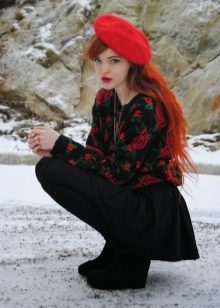How to determine your color type of appearance?

There are more than 7 billion of us on Earth. Our charm lies precisely in the dissimilarity. But colorists, image makers tried to systematize the types of appearance. And they did it. A different combination of colors of eyes, hair, skin was taken as a basis, and the degree of contrast between all components was also taken into account. As a result, all people were conditionally divided into color types.




Color type is what nature has awarded us. It is given at birth and does not change radically in the course of life, no matter how the woman tries to do it.
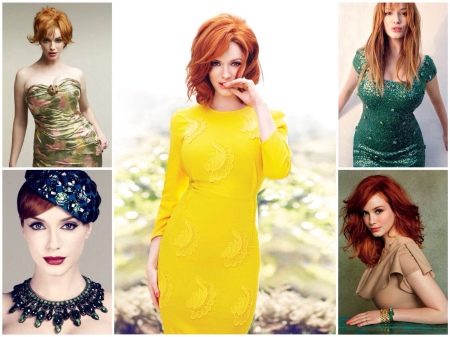
Hair coloring, eyebrow tattooing, tanning ... The true color type cannot be masked.

What is it for?
A correctly defined color type will help a woman always look spectacular and harmonious. Clothes in the "right" range emphasize what you want to show the world, and carefully hide what you do not want to advertise. Knowing what can and cannot be done when applying makeup or choosing hair dye will help a woman avoid unwanted and very unsuccessful experiments on herself.

Agree, rarely is anyone born with an impeccable sense of beauty, and can intuitively guess what suits him best. There are only a few such people.Color typing was originally created for most of humanity, because doubts are inherent in everyone.

We are used to composing our wardrobe based on our own color preferences, as well as on the presence of a sense of self-satisfaction. This feeling is formed based on the opinions of other people. If colleagues, acquaintances or relatives tell you in chorus that it is in a green dress that you are more beautiful than ever, then you will sincerely believe that green is your color. This could be a mistake. Only a correctly established type is able to give the keys to an irresistible image.




Types of color type
According to the ratio of eye color, hair color, skin tone, degree of contrast, colorists distinguish 4 global color types. They named them as the seasons - "Winter", "Spring", "Summer" and "Autumn". Each color type is divided into three more subcategories, thus, there are 12 color types. But it should be noted right away that there are no pronounced representatives of a particular color type. Therefore, it is possible to talk about a person's belonging to a particular color type only by its maximum correspondence to the parameters of each group.
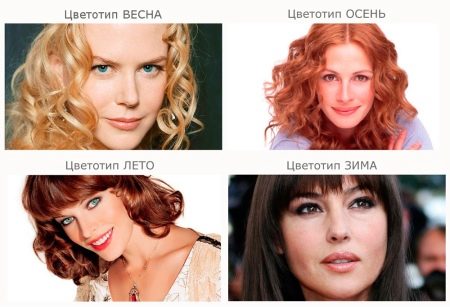
"Winter"
The color scheme of the coldest season is, of course, cold. Therefore, the appearance of a person - "winter" will always be contrasting. In "winter" people, the skin is usually either very light, or, conversely, rather dark. The eyes are brown, black, or unexpectedly bright blue with a steel tint. Hair is either very light or very dark.

"Winter" are of three subtypes - Dark Winter, Bright Winter, Cold Winter. Representatives of "Bright Winter" are the most notable. They have bright eye color and very contrasting hair. "Dark Winter" is a subcategory to which people with a predominance of dark colors in their appearance can be attributed. Representatives of "Cold Winter" are absolutely devoid of warm spectra, their eyes, regardless of whether they are dark or light, have an icy sheen, which is impossible not to notice.






"Spring"
People whose appearance is dominated by warm colors. Often, representatives of this color type are characterized by pink skin, sometimes with a peach tint, noticeable hair (for example, red or wheat), often “spring” people have freckles of a golden hue.

"Spring" is different: Warm, Bright and Light. People - representatives of "Bright Spring" are famous for their pure shades, devoid of smoothness and tenderness, they seem to shine. Those who belong to the "Warm Spring" subtype are completely devoid of cold tones in their image. "Light Spring" is warm and tender. The color of the eyes, skin and hair of such people is filled with warm shades.






"Summer"
Representatives of this color type have predominantly cold shades, there is practically no brightness, contrast in appearance is minimized. "Summer" people are rewarded by nature with fair skin, sometimes with a slight olive tint. Hair is most often ashy, light brown. Eyes - brown, gray, blue-gray. This is the most common color type in our latitudes.

All "summer" people, in turn, are divided into three subcategories - Light Summer, Mild Summer and Cold Summer. Bright Summer - these are people with the least pronounced contrast in appearance, they have velvety skin, hair from blond to light blond. Mild Summer is those who have a tendency towards warm in their appearance, but it is insignificant. Cold Summer - a subtype with a predominance of cold shades, the contrast level is in the middle values.






"Autumn"
Undoubtedly, a bright and surprisingly warm color type in terms of gamut. The skin of its representatives never has cold shades, the hair is almost always reddish with a tendency not to red, but to warming and pleasing to the eye "copper", "gold". Eyes are almost all varieties of green.

There are three subcategories: Warm Autumn, Soft Autumn, Dark Autumn:
- Representatives of "Soft Autumn" are distinguished by delicate shades in their appearance, moderately muted.
- "Dark Autumn" unites people in whose appearance there is a high contrast between all the components of their appearance - between skin, hair and eye color. Warm hues have saturation and depth.
- "Warm Autumn" is a subtype designating the brightest representatives of the "Autumn" color type.






Methods
You can determine belonging to a color type in different ways.
Seasonal analysis method
The very first method that has arisen, which is based on the conditional classification of people by analogy with the four seasons. We have already met him. The disadvantage of this method is that it is suitable for only a quarter of the world's population. Only 25% of people can be attributed to the color type using the seasonal method. Professional colorists are gradually moving away from such color diagnostics, believing that the method is hopelessly outdated.

Free choice method
This method has little to do with the scientific approach, but sometimes it allows you to quite accurately "get" into your flavor. It is based on matchmaking. You don't need much - patience, optimism, daylight and a mirror.

Wash off all makeup from your face, hide your hair under a light kerchief so that even the roots do not peep out.
Take two test handkerchiefs or scarves, pieces of fabric will do. Let one of them be a rich warm range, the other cold. Examples are coral and pale pink.
You will need to take turns bringing the scarves to your face.

First, prioritize everything. The first is to determine the degree of brightness of the skin, eyes, hair. If everything is more or less clear with brightness now, it's time to decide with colors. Let's say bright suits you, then you need to take two pieces of fabric from the yellow and blue ranges and "try on" them to find out if warm or cold shades suit you.
If bright colors aren't your option, go for pastel dough shawls. As a result of practical selection, you will get a color type. Bright and cold? Hence, "Winter". Bright and warm? There is "Spring". Cold and muted tones are characteristic of the typical "Summer". Soft and warm - "Autumn". It may turn out that you will feel that you belong to two color types at once. In this case, you need to use the recommendations for both types or carefully study the subtypes of each category of appearance.
See below for more details.
Directional method for determining the color type
This is an analysis that is built using all the same three characteristics - hair, eye and skin color. After evaluating the warmth - coldness of a color, its brightness or dimness, as well as light or darkness, one most important characteristic is established. She is dominant. With the directional method, it is usually called the color temperature.

Method of 12 color types
Today, the most accurate way to determine the color type, the basis of which was formulated by the artist and professor Albert Munsell at the beginning of the 20th century. He took the colors and divided them according to lightness, hue and saturation, placed them in an imaginary cylinder in three-dimensional space and assigned each their own index. He also determines the so-called degree of color. It is the Munsell colorimetric system that all subtypes of the main four "seasonal" color types owe their existence.

How to find out your color type?

What not to do is not to define your color type by skype or photo. There are a lot of offers on the Internet, for your hard-earned money to give you color lessons some "stylists", and quickly and accurately "put the desired color diagnosis." In most cases, this is just a way to make you pay. It is not a fact that the result will be reliable or will be at all.

It is also not necessary to rely on the accuracy of self-determination of the color type. When choosing yourself, you can easily confuse the colors that really suit you with the colors that you subjectively like. In this case, the color type will be determined incorrectly. It is better to entrust this business to professional designers and colorists.

How to find out your color type by the color of hair, skin, eyes?
First of all, you should be as objective and attentive to yourself as possible. It is quite simple to decide on the hair color, therefore this criterion is the main one in the "seasonal diagnosis". Blondes, redheads and hot brunettes are most easily recognized.
With the mass of shades of brown (brown-haired), the most difficulties arise. Hair color is not so important in determining the type. The shade that the curls acquire in sunlight should be taken into account. If it is golden, copper, wheat, then we can talk about a warm range. If ashy, silver is a cold scale.




Skin tone deserves a closer look. It is not difficult to distinguish between cold and warm types: "winter" skin is always light and cold, "summer" - warmer in "autumn" people, it has a golden tone, and a girl - "Spring" will most likely have a peach tint of skin.

And the diagnosis of the color of the eyes requires a very reverent attitude. "Warm" eyes - "chocolate", "nut", bluish or turquoise. Cold color types, as a rule, have gray eyes, clean green, black, clean blue.
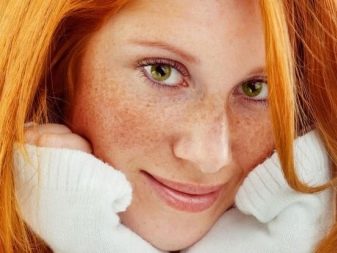



Lip color is not a mandatory criterion, but it can be used as an additional hint in the difficult task of determining your color type. For "spring" people, lips are usually pink with a slight shade of pastel colors. In “summer” ones, they have a milky hue and a general pale pink background. "Winter" color type means pale lips, and "Autumn" - lips of warm pink shades.

Examples of determining the color type
It is much easier to navigate the color types by looking at photos of celebrities who have a pronounced flavor.

"Winter"
Typical representatives of their type are Nastya Zavorotnyuk and Liv Tyler. Enchanting contrasts prevail in their appearance.






"Summer"
Natalia Vodianova and Uma Thurman demonstrate all the advantages of a cool "Summer". There is no flashy brightness in them, but the midtones are charming.






"Spring"
Blooming and spring-bright Anna Kournikova and Princess Diana.






"Autumn"
Typical representatives are singer Julia Savicheva and actress Julia Roberts. Very noticeable, like all women of this color type.





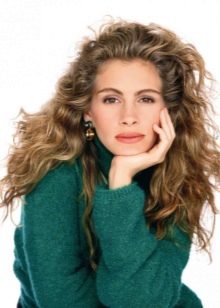
Compare color types (pivot table)
|
Colors "Winter" |
Coloring "Spring" |
Coloring "Summer" |
Color "Autumn" |
|
|
Hair color (possible options) |
All ash, black, chestnut (dark options only), blonde (platinum). |
Light brown (all light versions), "ash" and "chestnut" with a tint to gold, the color "ripe straw". |
Light brown (dark) and light (cold) shades. There is always a low tide in "ash" of varying intensity. |
The "warmest" spectra. The whole "red" palette. The exception will be red hair with a ruby tint. |
|
Skin tone |
Cold pale "porcelain", olive. The color must have a mysterious transparency and blue tint. |
Light, with a velvet texture. Pastel color of baked milk predominates. There may be a natural blush. |
Pink, in shade closer to "milk, white, possible options are blue." The tone of ripe olives is sometimes found. |
Exceptionally warm colors. "Honey", "Gold" General gamma beige. |
|
Eye color (possible options) |
Clean, crisp, pronounced. Gray, black, blue and green. A stark contrast to proteins. |
Light green, blue, nutty. There are often separate “speckled” fragments of other colors. |
Gray, gray-blue with a cool shade, gray with green, brown (light options). Squirrels are not snow-white, the shade is matte. |
Gray, steel, blue, green, amber. |
|
Colors to wear for this type |
Cold and contrasting white, black, "turquoise", deep violet, blue, gray, "emerald", "steel", metallic. |
Peach, Apricot, Salmon, bright yellow, pink, caramel, coral. |
Blue (heaven), lemon, lilac, turquoise, plum. |
Brown scale, "Gold", "Sand", olive, terracotta. |
|
Shades to avoid |
Soft pastels (beige, yellow, pink). Do not wear milky shades and green derivatives. |
Pure white, pure black, blue spectrum, bright raspberry, indigo. |
Contrasting white-black, orange, apricot, indigo, fuchsia. |
Light blue, blue gamut, black and white solutions, violet. You should also avoid all pastel "summer" tones. |
|
Accessories and jewelry |
Everything that is catchy and glitters is diamonds, crystal. Gold jewelry is perfect. |
Everything that looks "expensive" and sophisticated: pearl, gold and sapphire jewelry. |
Anything that looks discreet. Jewelry made of silver, white gold, platinum, with aquamarine, opal. |
Everything made from natural materials. Decorations with feathers, fur, leather and bone products, amber and wood jewelry are perfect. |
|
Makeup |
Quite bold in terms of brightness, but moderate in performance. There shouldn't be too much of it. Preference - pink, blue, beige, gray, emerald green shades. |
Delicate and as close to natural natural shades as possible. No frills. Ideal shades are peach, hazelnut, aquamarine. |
The total gamma is cold. Shades of silver, browns and purples will do. |
Dim. Natural shades prevail - "gold", brown scale, olive. |
How to choose clothes?
Choosing a wardrobe, guided by the color type, you need to be very careful and careful. And whatever the stylists advise, and whatever the fashion trends of the current season require of you, it is imperative to take into account the individual characteristics of your appearance. Someone will want a color that "according to science" is generally contraindicated for him. Everything is strictly individual!

"Winter" looks
Girls, representatives of the "winter" color type of appearance, will not lose if they wear clothes of bright and rich, deep cold tones. Their bright appearance, in any case, "pulls" attention to themselves. Turquoise and emerald shades, classic white and black will help to emphasize the advantages of the "Winter" figure.





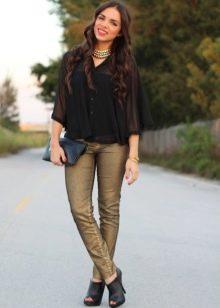
"Spring" images
Representatives of the "Spring" type have a hard time choosing clothes, because they need to strictly observe the balance of shades "on the verge of a foul": the milky color will decorate the "spring" woman, and the white will disfigure, the airy pink will give her romance, and the rich crimson will look vulgar and cheap. When choosing a wardrobe - "Spring" should give preference to pastel colors.


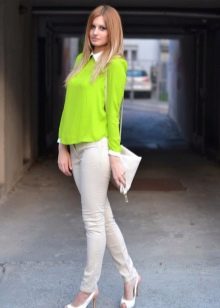
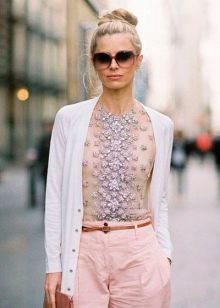

"Summer" looks
Representatives of the "Summer" type are one of the few who are absolutely not contraindicated in the numerous blue range. In the wardrobe, there must be things of cold colors.




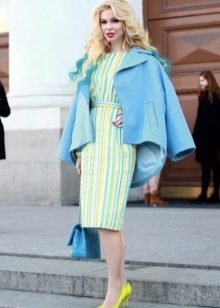

"Autumn" images
Natural bright external data can "outshine" any clothing. When choosing a wardrobe color, be guided by non-flashy colors - sandy and earthy shades, "chocolate", "plum", bold experiments with red shades are possible.


